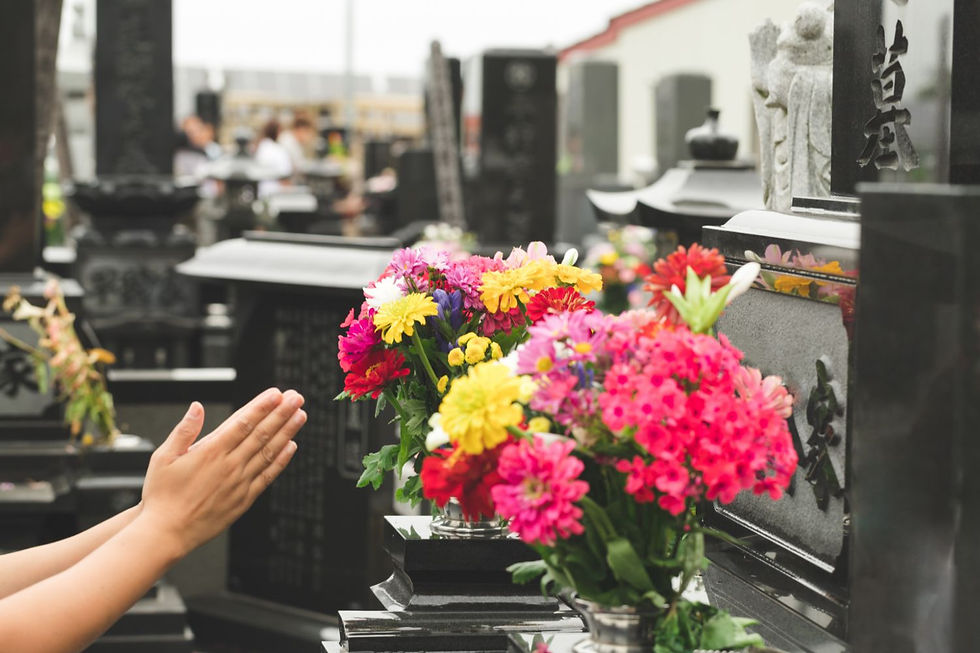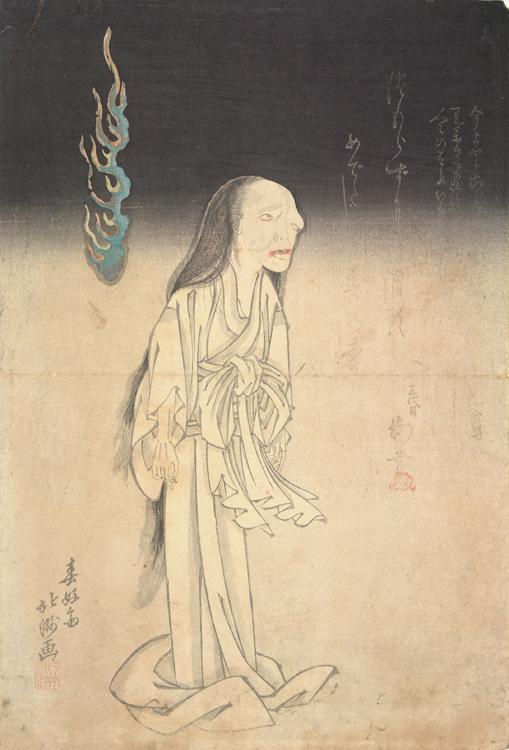What is the Obon Holiday in Japan? A Complete Guide to Traditions & Smart Itinerary [2025 Edition]
- Shinya Yamada
- Jul 25
- 7 min read

I've always loved the solemn atmosphere of the Obon season in Japan.
When I was a child, I would often spend this period at my mother's rural hometown in Nagano Prefecture. In the countryside there, the traditional scenes of a Japanese summer are still very much alive. I vividly remember how my cousins and I would be playing and joking around one moment, but the instant it was time to visit our ancestors' graves, a quiet, respectful mood would settle over all of us.
It was this switch in feeling that I loved the most. This shift between ordinary days (ke no hi) and special, ceremonial days (hare no hi) is, I believe, a unique and beautiful part of Japanese culture.
In this guide, I want to share that deeper cultural feeling with you. We'll explore the true meaning of Obon—one of the most important events in the Japanese calendar—and uncover a surprising secret about how it's celebrated in Tokyo. We'll also delve into the subtle art of ryō (the culture of 'feeling cool'). And, I will share some useful information, such as ideas on when to travel in Japan and Tokyo. Through this guide, you will be able to connect with Tokyo and Japan on a much deeper level.

What is Obon Holiday? One of Japan's Most Important Traditions
To truly connect with the heart of summer in Japan, you first need to understand what the Obon holiday is all about. It's often compared to a "Day of the Dead" or a spiritual homecoming, a beautiful and important period when it's believed the spirits of ancestors return to visit their families.

The Heartwarming Origin Story
The term 'Obon' is actually a shortened version of the formal Buddhist term, Urabon'e (盂蘭盆会). The word is said to derive from the Sanskrit 'ullambana,' which means 'to be hung upside down,' vividly describing a state of great suffering.
The origin of this tradition comes from a Buddhist story about how one man saved his mother from exactly this kind of suffering. A disciple of the Buddha named Mokuren used his spiritual powers and saw that his late mother had fallen into the Realm of Hungry Ghosts. The Buddha advised him to make offerings to the monks at the end of their summer training. When he did so, his mother was freed from her torment and reborn into paradise.
This powerful story—of freeing one's ancestors from this 'upside-down suffering' through acts of gratitude and offerings—forms the emotional and spiritual core of the Obon festival today.

How is Obon Observed? Customs a Traveler Might See
While many Obon traditions are private family affairs, as a traveler, you may see signs of this spiritual season across Japan.
Welcoming Fires (Mukaebi) and Send-offs (Okuribi): On the first day of Obon, families light small fires or lanterns outside their homes to guide the spirits back. On the last day, they relight them again to guide the spirits back to the spirit world. The most famous of these is the spectacular Gozan no Okuribi (Daimonji) in Kyoto, where massive bonfires in the shape of kanji characters are lit on five mountainsides.
Cucumber Horses and Eggplant Cows (Shoryo-uma): You might see these cute figures in homes or shops. The cucumber represents a swift horse to bring the spirits home quickly, and the eggplant a sturdy cow to carry them back to the spirit world slowly and laden with offerings.
Bon Odori (Bon Dance): These lively community dances, held in the grounds of temples and parks, are a way to celebrate and entertain the returning spirits.
Floating Lanterns (Toro Nagashi): In many parts of Japan, the Obon period closes with a beautiful ceremony where paper lanterns, carrying wishes for the spirits, are floated down a river to symbolically guide them on their way.

The Surprising Connection to Fireworks
But here’s a surprising fact that connects this solemn tradition to Japan's most spectacular summer events: fireworks. Originally, many of Japan’s grandest firework displays began as part of Obon, with the explosions of light and sound meant to comfort and guide the ancestral spirits. So when you're watching a brilliant hanabi display, you're also witnessing a beautiful evolution of this ancient tradition.

Shin-bon vs. Kyu-bon: The Mystery of Tokyo's Two Obon Periods
Now that you understand what Obon is, you might notice something confusing: why do some people talk about Obon in July, while most of Japan celebrates it in August? This is a fascinating piece of Japanese history and a key travel tip.
The reason for the split comes from a calendar change during the Meiji Restoration in the late 19th century. Japan adopted the Western solar calendar, which shifted all traditional dates.
Shin-bon (New Obon) in July: Tokyo, as the modernizing capital, strictly followed the new calendar. This placed Obon on and around July 15th. This is still the official, more spiritual Obon period in Tokyo and a few other cities.
Kyu-bon (Old Obon) in August: For most of the country, however, July was the busiest farming season. They chose to delay Obon by a month to the equivalent time in the old calendar, which falls around August 15th.
What This Means for Travelers (The Most Important Part):
While Tokyo's official Obon is in July, the practical "Obon holiday" that affects the entire country is the August one. This is when most companies give their summer vacation, stemming from an old tradition called yabuiri where servants were given time off to return to their families.
In July in Tokyo: You'll see the quieter, more spiritual side of Obon in Tokyo. Families conduct private ceremonies, and you may see decorations at temples.
In Mid-August All Over Japan (including Tokyo): This is when the national holiday mood kicks in. It's the time of the great travel rush (kisei-rasshu), but also when you'll find the big, lively Bon Odori festivals lighting up the nights in Tokyo and beyond.

Pro-Tip: A Smart Itinerary for August Travel
Many of Japan's most famous festivals (like those in Tohoku) are in early August, followed by the nationwide Obon holiday (Aug 13-16). During Obon, millions of Japanese people leave Tokyo to return to their hometowns. You can use this to your advantage with a "reverse itinerary":
Early August (e.g., Aug 1-10): Start your trip by traveling from Tokyo to the regional areas to see their legendary festivals. Yes, transport will be busy, but you'll be ahead of the main Obon rush.
Mid-August / Obon Week (e.g., Aug 11-17): Travel back to Tokyo. You'll find the city relatively quieter than usual, making it a great time for sightseeing and enjoying local events without the massive domestic tourist crowds.
Late August: Stay in Tokyo to experience the city's own major festivals like the
Koenji Awa Odori (August 23-24, 2025) and Asakusa Samba Carnival (August 30, 2025).
This strategy allows you to see the best of both worlds while smartly navigating the peak travel season.
The Art of Feeling Cool (涼 - Ryō) in the City
Ryō is the Japanese concept of finding coolness through the five senses, a perfect skill for a humid city. Here’s how you can experience it in Tokyo.
The Sound of Fuurin (風鈴): Listen for the crisp, tinkling sound of glass wind chimes. You'll hear them in the quiet, traditional neighborhoods of Yanaka, or see beautiful ones for sale in the elegant lifestyle floors of department stores in Nihonbashi or Ginza.

The Sight of Uchimizu (打ち水): As you walk through areas like Kagurazaka or Asakusa in the late afternoon, you may see shopkeepers sprinkling water on the hot pavement. This simple act, uchimizu, is a shared ritual of hospitality that provides an instant visual and psychological sense of relief from the heat.
The Chill of a Kaidan (怪談) Ghost Story: Why are ghost stories a summer tradition in Japan, while in the West they belong to Halloween? While a scary story can certainly give you a "cool" shiver, the real reason is deeply connected to Obon, the season when the spirits of the dead return to our world. The tradition was popularized by Kabuki theaters, which staged famous ghost plays (like Yotsuya Kaidan) as "cool-down theater" (suzumi shibai) in summer. This practice continued an even older folk tradition of telling tales during Obon to both welcome ancestral spirits and soothe restless ghosts who might also be wandering. Today, you can find this cultural chill in summer horror movie releases and special kaidan storytelling events at temples.

The Soundtrack of Summer: In parks like Yoyogi Park or the Shinjuku Gyoen National Garden, take a moment to just listen. The powerful, buzzing chorus of the cicadas (semi) is, for every Japanese person, the unmistakable and nostalgic soundtrack of summer.
From the quiet reverence of Obon to the explosive energy of a fireworks display, and the subtle art of finding 'ryo' in a city's hum—the Japanese summer is a beautiful tapestry of contrasts. It’s these moments, both ceremonial (hare) and everyday (ke), that transform a great trip into an unforgettable one. We hope this guide helps you connect with the true soul of Tokyo and find your own special summer memories.

And the best way to find those memories and hear the stories behind them is by listening to the voices of locals. You can read about customs like Obon, but to truly understand their heart, you need to be here, experiencing them with someone who lives the culture every day.
That is the experience we aim to provide. Imagine discussing the spirit of Obon while strolling through the backstreets on a Kagurazaka walking tour, or hearing deeper explanations from an artisan or a ryotei manager during a traditional cultural experience. This, we believe, is the real pleasure of travel—not just seeing a place, but truly connecting with its people.
If you agree, we'd be honored to be your guide.
⬅️ For a complete overview of your August trip, including festivals, weather, and more, head back to our main guide:[Return to Tokyo Travel in August: The Ultimate Guide to Festivals, Food, and Fun]

Book Each Experience
How to Access Kagurazaka
The Kagurazaka area is conveniently located within 30 minutes from any major station in Tokyo. This is because Kagurazaka is situated in the heart of Tokyo, at the center of the Yamanote Line. Please come and visit this convenient and charming Kagurazaka.





![How to Survive Tokyo's August Heat: A Guide to the Weather, What to Wear & More [2025 Edition]](https://static.wixstatic.com/media/983a60_a696bd47025245bea3e8a6458e4329a7~mv2.jpg/v1/fill/w_980,h_653,al_c,q_85,usm_0.66_1.00_0.01,enc_avif,quality_auto/983a60_a696bd47025245bea3e8a6458e4329a7~mv2.jpg)
![Tokyo Travel in August: The Ultimate Guide to Festivals, Food, and Fun [2025 Edition]](https://static.wixstatic.com/media/983a60_426049ec69c646fb8ec5af6a3a9825a9~mv2.jpg/v1/fill/w_980,h_653,al_c,q_85,usm_0.66_1.00_0.01,enc_avif,quality_auto/983a60_426049ec69c646fb8ec5af6a3a9825a9~mv2.jpg)
Comments